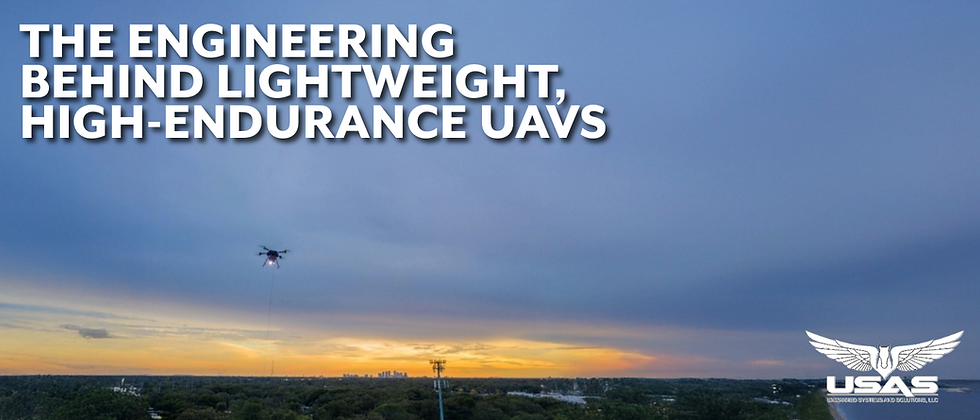Understanding the Power and Data Capabilities of Tethered Drones
- USaS Staff
- Feb 12
- 2 min read

In simple terms, the most effective communications and intelligence, surveillance, and reconnaissance (ISR) systems are networks that connect producers to consumers. For instance, in the context of ISR with tethered drones, the producer — a camera-equipped tethered drone surveilling an area — captures images and information to be transmitted to its consumers — the soldier on the ground or the command center. In other situations, such as disaster relief, the producer might be a person using a tethered drone system to relay critical information, with their family or rescuers as the consumers. In both scenarios, it’s vital that the network transmits data quickly, securely, and efficiently to meet the needs of both the producer and the consumer. Therefore, the network must be reliable, secure, and capable of handling the bandwidth and speed required for high-volume data transmission. This article discusses why tethered drone systems (TUAVs) offer a clear advantage over smaller, untethered drone systems (sUAVs) in these areas.
The Trade-Offs of Using Untethered Drone Systems (sUAVs)
When utilizing tethered drone systems for comms and ISR, a critical trade-off arises regarding the security, reliability, bandwidth, and speed of data transmission. A typical untethered drone (sUAV) transmits its collected data wirelessly to the consumer. While the sUAV is highly mobile, it is limited by its size and battery life, which prevents it from carrying the heavier payloads necessary for transmitting high-bandwidth, high-speed signals or images. Moreover, wireless connections are often vulnerable to interception and are limited in capacity and transmission speed.
Why Tethered Drone Systems (TUAVs) Are the Superior Choice
On the other hand, a tethered drone (TUAV) sacrifices some mobility but excels in data transmission security, reliability, speed, and capacity. While a typical sUAV can only carry a payload of 1-5 lbs, a tethered drone system can carry over 20 lbs, allowing it to support more powerful equipment capable of collecting and transmitting higher volumes of data and signals. Unlike sUAVs, which send limited amounts of data wirelessly — often slowly and insecurely — a high-quality incorporates fiber optic strands within its tether. This enables fast, secure, and high-capacity transmission of signals and images down the tether to the consumer, ensuring both reliability and security.
For missions that demand fast, secure, and reliable data transmission, whether for signals or imagery, tethered drone systems (TUAVs) are the superior choice.




Comments